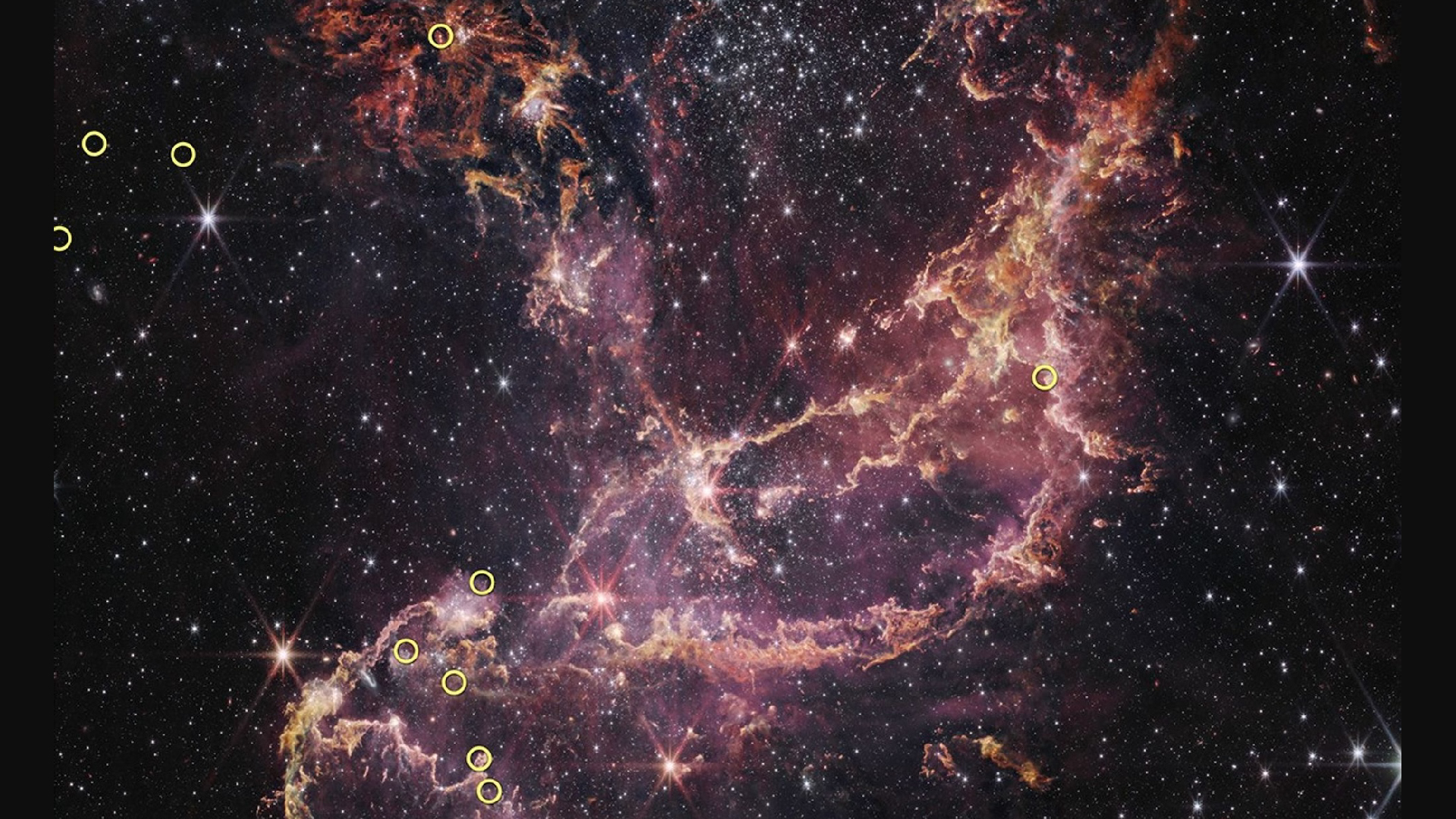
The James Webb Space Telescope (JWST) has just solved a 20-year-old mystery about how ancient stars could host massive planets.
In the early 2000s, the Hubble Space Telescope observed the oldest planet ever, an object 2.5 times as large as Jupiter that formed in the Milky Way 13 billion years ago, less than a billion years after the universe was born. The discovery of other old planets soon followed. This puzzled scientists, as stars in the early universe should have consisted mostly of light elements like hydrogen and helium, with almost none of the heavy elements — things like carbon and iron — that make up planets.
Astronomers believed that the disks of dust and gas surrounding these light-element stars should have been blown away by the star’s own radiation, dispersing the disk within a couple of million years and leaving nothing behind to make a planet. The heavy elements needed to build a long-lasting planetary disk around a star weren’t available until later supernova explosions created them, scientists thought.
Related: James Webb telescope uncovers massive ‘grand design’ spiral galaxy in the early universe — and scientists can’t explain how it got so big, so fast
Now, though, the JWST has taken a close look at a modern-day proxy for these old stars and found that the Hubble was not mistaken. In new research published Dec. 16 in The Astrophysical Journal, researchers found that when there are few heavy, metallic elements, planetary disks can last much longer than previously believed.
“We see that these stars are indeed surrounded by disks and are still in the process of gobbling material, even at the relatively old age of 20 [million] or 30 million years,” study lead author Guido De Marchi, an astronomer at the European Space Research and Technology Centre in Noordwijk, Netherlands, said in a statement. “This also implies that planets have more time to form and grow around these stars than in nearby star-forming regions in our own galaxy.”
James Webb’s observations
The JWST observed the spectra (a measurement of different wavelengths of light) of the stars in the star-forming cluster named NGC 346. Conditions in this cluster are similar to those in the early universe, with lots of light elements like hydrogen and helium and a relative dearth of metallic and other heavier elements. The cluster is in the Small Magellanic Cloud, a galaxy 199,000 light-years from Earth.
The light and electromagnetic waves coming off these stars and their surroundings revealed that they host long-lasting planetary disks. There are two ways this could work, according to Marchi and his colleagues.
The first is that stars made up of light elements do not host a lot of elements undergoing radioactive decay — those radioactive elements are all heavier. This lack of radiation means that the star has less power to push away the planetary disk, so it might last far longer than a disk around a star with more heavy elements.
Another possibility is that a star formed from only light elements must form from a very, very large cloud of dust and gas. This extra-large dust cloud would also leave behind a huge disk around the newborn star, and that huge disk might take a very long time to blow away, even if light-element stars give off just as much radiation as heavier-element stars.
“This has implications for how you form a planet, and the type of system architecture that you can have in these different environments,” study co-author Elena Sabbi, chief scientist for the Gemini Observatory at the National Science Foundation’s NOIRLab in Tucson, said in the statement. “This is so exciting.”









Leave a Comment